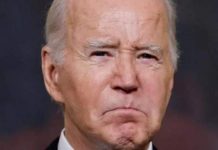Political Pundit and Researcher on International Development Studies and Global Security Commentator.
ABSTRACT — This academic article is intended to explore the physical fortification of the United States’ border with Mexico. It profoundly explains why the debate of the Mexican border wall has started in the late Twentieth Century. It also ascertains in-depth by discerning the aim of the commencement of the border fence project. Subsequently, the piece climaxes the strategic mission of the border fence, which is to eradicate the massive illegal Mexican immigrants into the United States. The article pinpoints how the scheme came into being in the early 1990s by illuminating the well-known Operation Gatekeeper. Moreover, the study considers both the legal acts and the national allocated expenditure of the US-Mexico fence scheme.
Keywords: Border, physical Fortification, Immigration Policy, Nationalism, Economic Protectionism, Globalization, Media, Political Campaign, Neoliberalism.
- Introduction
The US-Mexican barricade venture came into being in the early 1990s by the well-known Operation Gatekeeper. However, the popularity of the perimeter fence turned out to be a widespread phenomenon – after when President George W. Bush signed the Secure Fence Act 2006 (Gulasekaram, 2012). Bush and his advisers argued that the Mexican border wall will protect the American people, and at the same time – the border wall is good for immigration reform. Bush stated “This bill will help to protect the American people. This bill will make our borders more secure. It is a significant step toward immigration reform” (Bush, 2006). Subsequently, the border wall policy attracted substantial national funding from the Congress (Hayoun, 2017) and later gained the popularity of the public support.
Again, the primary campaign of the American Whitehouse election in 2015 and 2016 up until the present day of Trump’s Presidency – the issue of Mexican border wall rhetoric accelerated its speed, after Trump genuinely ratified the executive order of the US-Mexico physical fortification inside the Department of Homeland Security. Trump also bolstered to the American citizens that his country would receive full reimbursement from Mexico. Despite the Mexican President Enrique Pena, who restated that his country has no intention of funding the wall, as he argued ‘‘I regret and condemn the decision of the United States to continue construction of a wall that, for years, has divided us instead of uniting us,” Pena Nieto said in a nationally televised message” (The Sun, 2017).
In this article, I will explain the United States’ approbation plan and Mexico’s censure of the border wall, and why the majority of the citizens of the United States did not back to build a blockade between the two countries according to the opinion polls. While at the same time electing the most controversial President in the history of the United States. On the other hand, the piece will compare and contrast the unpopularity of this project in Mexico, and how the Mexican border fence triggered and riled up the long-dormant Mexican nationalism. The article will focus on how this will jeopardized the fundamental American discourse of regionalism and globalization by promoting and importing the far right European ideology of neo-fascist tendencies. Fundamentally, to explain the popularity of the Mexican wall, the article will argue that the rise of realistic international politics of pro-nationalism rhetoric has generated such popularity. In other words, why the neoliberal globalist society of the West all of a sudden became nationalists and innovated new paradigm shift of anti-globalist ideology?
- The American Perspective: Popularity of US-Mexican Border Wall.
Prior the Trump administration, in the name of national security, the issue of undocumented immigrants from the Southern border compelled US politicians to approve policies, in order to fortify border controls with Mexico in the late 20s and early 21st centuries. Thus, the United States has undertaken an enormous scheme that cost several billions of dollars, to construct an extended physical fence along the segments of the border between Mexico and the United States (Gilman, 2008).
Although, the aim and objective of the barrier were to reduce and/or eliminate the illegal immigrants from the Southern border, in order not to allow them to enter the United States. There are critiques, which focus on the high cost of the fence. The environmental damage caused as well as its significant death without any deterrence (Gulasekaram, 2012). Again, the US-Mexico immigration and border issue became very popular, after when President Trump activated Anti-Mexican immigration rhetoric in his primary election campaign. Trump promised that he would build a beautiful Southern border – as he stated that the wall would end what he called illegal immigration problems in which he understood to responsibly undertake the duties of national security mission as the Head of State.
In 2015 campaign, in his presidential candidacy, Trump swore to build a giant barrier along the border to keep Mexican migrants out, ‘‘when sends its people, they are not sending their best…. They are sending people that have lots of problems, and they are bringing those issues with us. They are bringing drugs. They are bringing crime. They rapists” (Trump, 2015). These racist remarks portrayed an instantaneous reaction from Mexico as Miguel Angel Osorio Chong, the Interior Minister of Mexico responded “The remarks by Donald Trump seem prejudicial and absurd” Unlike Mexico, Trump gained more support from voters all across America as he made this nationalistic and ethnocentric comments to America’s only Southern neighbour. ‘’Despite the outcry over the remarks, Mr. Trump’s proposal resonated with a large block of voters, and it became a pillar of his presidential campaign” (Graham e.t, 2017 cited from Telegraph).
As many political commentators and social scientists believe – Trump defeated both Hillary Clinton and his Republican contestant; for the reason of his anti-globalisation, anti-regional and racial grandiloquence. Furthermore, the American citizens trusted that globalization has taken away their jobs, and wealth, which brought illegal immigrants, who are crossing from their Southern border with poverty, drugs, and crimes. There are also other factors of social concerns such as cultural assimilation, language difference, and multi-diversity; this is driven by the growing far right xenophobia. According to Hooghe and Marien ‘’For someone who is very strongly concerned about crime, drugs, unemployment, the rise of Spanish language rights in US society, and increasing diversity, the wall offers a perfect metaphor: would it not be perfect if we could just build a wall to keep all these dangers outside, so that we can continue to live our perfectly tranquil small town American life? ‘’ (Hooghe, et al., 2016). This ‘’keep all these dangers outside” refers how the US-Mexican border wall gained its popularity inside the United States.
Even though, Trump gained votes from the American citizens, and won the electoral college enough to be sworn in US president; some academicians like Hooghe and Marien still argue that his nationalistic anti-Mexican rhetoric remarks endorsed him to win the highest rank position of the nation. However, the percentage of those who oppose the wall has increased significantly (Freeman, 2017). But, this is only after his victory, and there come a question on why the majority ”of the citizens of the United States not supported to build a wall between the two nations” according to polls after Trump has elected? More Americans remain to oppose the US-Mexican border by a margin of 62% comparing to the 35% who favour to build a wall along the entire U.S. border with Mexico (Suls, 2017).
Perhaps, the public supported Trump after when he promised – according to his remarks during the campaign that Mexico is going to pay the wall. Hence, the wall will be built, the number of Mexican and other Latinos migrant will continue to fall, then the United States turns out to be a utopia empire (Hooghe et.al, 2016). Nonetheless, after understanding that things are different in reality – and the current 650 miles of existing fence, which cost more $7 billion is not stopping migrants from entering the United States. The public has changed their mind. Therefore, the popularity of the wall is diminishing in the United States, because of its cost. As Sharman argued ‘’some 650 miles of fencing already in place has come at the cost of $7bn (£5.6bn) and Mr. Trump’s plans require extending the barrier into increasingly remote and mountainous regions, which raises the building costs significantly (Sharman, 2017).
- The Mexican Nationalism
Since Trump vowed in his presidential election campaign and later signed to build a wall in which he believes that Mexico will pay all its costs – a wave of nationalism unseen for decades has swept all across Mexico (Dibble, 2017). This anti-US sentiment shakes the hearts and the minds of every Mexican, whether in the Northern border or in the Southern border. Previously, patriotism in Mexico softened the last thirty years, because of the economic dependency of the United States. On the other hand, the massive migration has also changed the nationalism equation caused by the grievances of European colonialism and the Mexican-American war, which Mexico lost a significant portion of its territory. Again, according to Dibble ‘’ Mexican nationalism has its roots in the 19th century, forged during turbulent decades that saw it emerge from Spanish colonialism, fight off French intervention and lose a large amount of territory in the Mexican-American War” (Dibble, 2017).
Trump’s presidential victory restored the elapsed nationalist sentiment, or as some people argue the long-dormant Mexican nationalism. Today, Mexicans are calling to halt importing and buying American products such as Starbucks and Coca-Cola. In the social media, people are changing their profile pictures and replacing with their Mexican flags – patriotism fervour or nationalism sentiments are on the rise in the Southern border (todayonline, 2017). There is a reason why this nationalistic sentiment is taking place. Because, Trump’s administration and most of the people, who have voted for him – predominantly those who supported to build the beautiful wall along the border with Mexico are telling the Mexicans and their government not only; because Mexico is not sending to the US its ‘’best people, but rather it is sending useless migrants, who are bringing drugs, bringing crime and at the same time are rapists,” (Trump, 2015). Moreover, they are telling the Mexican government and taxpayers to pay for the wall, then those who are crossing the border will stop. Subsequently, America will be a new utopian empire without Mexican migrants. This is what the mainstream media in Mexico in particular spread as a moral panic. I will argue such a nationalist sentiment is somehow a moral panic, for a reason; even if the media is reporting just the news of Trump’s remarks, it still sending society into mass hysteria over the issue Trump’s racist remarks.
- Trump’s Anti-Globalisation.
“There is no global anthem, no global currency, no certificate of global citizenship. From now on, it’s going to be ‘America First” (Trump, 2017). The term ‘’American First” was not a term coined by Trump, it was a committee founded in 1940 by Isolationist students from the University of Yale, and the purpose was to keep President Roosevelt out from the European wars (Goldberg, 2017). But, today for Trump, the term is for protectionism and anti-globalism. It is more as an identity than an idea. Since he promised that ‘’America will shine for everyone to follow” but this time – America to shine is nothing to do with its values of liberty, democracy and the ideals of more freedom. This time for Trump, things have changed into more xenophobic, and the importance of unity is the priority for the American people, it is all about national identity (Goldberg, 2017).
The new political doctrine of Donald Trump is not a new concept to the world. It is typical to that of Vladimir Putin – Donald and his nationalistic rhetoric are now running after that of Russia. It looks that the United States is underpinning ‘’catch up” to a communist developmentalism when comparing Putin’s remarks in 2014 and Trump’s of 2017. As Putin stated that his government wants to take a newfangled root of self-reliance after Western sanctions in Crimea ‘’ We should wipe the critical dependence on foreign technologies and industrial production,” he said in his annual state of the union message. Again he argued, “The main thing we need to understand is that our development depends on ourselves first and foremost.” (Putin, 2014). In comparison to Trump’s current economic vision in which he wants to rebuild America ‘’ We will rebuild our country with American hands and American labour” following “two simple rules; buy American and hire American.” (Trump, 2017).
The two doctrines from these two historically very different countries are somehow parallel. The two leaders’ economic, and foreign affairs have a lot in common, although the only dissimilarity you can tell is – Putin’s self-reliance policy, which was to resist Western sanctions, while America has nothing to scare – because it is the most powerful nation on earth – therefore, no nation can impose sanctions. But the question is; what made Trump follow Putin theoretically? This can be interpreted, a self-reliance in which the United States new leadership has chosen to go through for its economic affairs on international relations. In other words, building a massive wall with US-Mexico border, the idea ‘‘buy America and hire America” is anti-globalism dogma. Trump’s new economic initiative seem popular for nationalistic because of Reagan’s rhetoric of “A nation that cannot control its borders is not a nation”. The thoughts of those who believe this remarks, which is to close borders and abandon globalism to a certain extent become popular – because of massive immigration and gradual economic development. It seems that Trump imported the far right nationalistic remarks in Europe; just to gain popular support from those who want more security and protection in America.
In Europe, it can be perceived, after a long process of socio-economic, political and cultural integration, a reappearance to inborn nationalistic sentiments. Because of fear, In the face of economic problems, terrorism, cultural assimilation of the massive refugees, who do not want to integrate with Europe but rather want to change Europe into theirs; or build a parallel Europe. Therefore, in Europe politicians can gain popular support if they promise protection and national security (Postelnicescu, 2016). Yes, nationalism is a crisis of identity (Smith, 2003), as every nation of the world wants to take its pride of its own national identity. That is what Trump exploited during his political campaign. It was all about anti-establishment of free trade with no border barriers, the sensitivity of mass immigration and the impossibility of social integration, because of religion, language, norms, and customs. However, nationalism sentiment is not the only option for Europe. The continent is still fighting for its values and democratic beliefs. What is happening in Europe, which is now belligerent with the clashing prophecies and visions of the identity of nationalism, to obliterate the national particularities of patriotism into the generous idea with such irreducible values of freedom, justice, liberty and democracy (Hazard, 1989).
- The Pro-Nationalism Sentiment.
In the West, globalization and the idea of neoliberalism refers an ideological belief that upkeeps the market importance and enlarges the economic freedom for individuals, to minimize the sum of the state market regulation to the bare minimum. In this regards, governments nationally will not intervene the markets, and in a broader sense, international trade between countries will not be imposed on restrictions of border control – so that capital, labour, goods and services will move freely between nation states (Wiken 2015). This very economic freedom mistreated the white working class of the Western world, high paid jobs have been moved from the developed United States and Europe to Mexico, China, India and the neo-statist countries of South East Asia, because of a cheap labour and rapid increase of manufacturing of goods. Therefore, their wages have been falling, and they believed that globalization took everything from them. These people thought they had been neglected by the political class – but with the arrival of Trump and the idea of ‘’American First,” they seem to have found a representative (Jacques, 2016). On the other hand, the subject of migration is high-pitched on the political agenda for governments around the world. Western governments are often under pressure to control the mass migrants crossing the border into their countries (BBC, 2004).
Nationalism, as the media sometimes label – what is happening here in Europe is an extreme dislike and fear of foreigners ‘’xenophobia’. This retrograde chauvinism flourishes to harm and damage on the host communities and migrants, particularly when governments are perceived to have lost control of the migration situation (BBC, 2004). In other words, it can be argued the lack of efficient management of migration has ensured the paradigm shift from the neoliberal globalist society of the West to the anti-globalist ideology of protectionism – and its national sentiments. It is the very protectionism that wants to close the borders to effectively control the free movement of labour and taxing high goods bought from other countries. It is understandable that Trump wants to impose 20% of the US raised tariffs on Mexico (Reuters, 2017). Therefore, the US-Mexican border has the popularity of nationalism and economic protectionism, and it is the result of Western governments’ lack of migration strategies and the downside or the neoliberal globalization drawbacks.
- Conclusion
In the result of mass migration, drugs, crimes and poverty, the United States politicians discourse was to build a strong physical fortification of the US-Mexico border during the 1990s and 2000s in the name of national security. But the aims and objectives of this high-cost fence have never turned into a reality (Gulasekaram, 2012). Again, Trump prompted the issue of the wall and promised that Mexico is going to pay all of its cost. This remarks attracted the white working class communities, who think that their jobs and perfect lives have been taken away by the massive, insurmountable difficulties of migration.
Again, this is an issue of national security including crime, drug, rape and many other problems according to Trump’s campaign remarks. The point of the popularity of the wall is also driven the nationalist sentiment that has arisen in Europe and America. On the other side of the Southern border of Mexico an Anti-US sentiment, which resulted that people post into the social media to boycott the American products (Dibble, 2017).
Apart from the detriments of immigration, the drawbacks of the globalised world and its connection with jobs and border-related national security issues, there also other factors of social concerns. This includes the migrants and host societies integration problems such as language and religion (Hooghe, et al., 2016), which later created the cultural xenophobia of the West.
Bibliography
BBC (2004) Viewpoints: Should Borders be Open? [online] available at: http://news.bbc.co.uk/1/hi/in_depth/3512992.stm (accessed 8 February 2017).
Dibble, S. (2017) With Trump, a resurgence of Mexican nationalism at the border. [online] available at: http://www.sandiegouniontribune.com/news/border-baja-california/sd-me-baja-nationalism-20170201-story.html (accessed 5 February 2017).
Freeman, B. (2017) Rasmussen Poll Shows Voters Favor Mexican Border Wall By Slight Margin [online] available at: http://www.newsmax.com/US/mexican-border-trump-donald-trump-poll/2017/01/29/id/770970/ (accessed 4 February 2017).
Gilman, D. (2008) Seeking Breaches in the Wall: An International Human Rights Law Challenge to the Texas-Mexico Border Wall. [online] available at:http://www.tilj.org/content/journal/46/num2/Gilman258.pdf (accessed 3 February 2017).
Goldberg, J. (2017) What Trump Means When He Says, ‘America First’. [online] available at: http://www.nationalreview.com/article/444211/donald-trump-america-first-slogan-stands-nationalist-identity (accessed 6 February 2017).
Graham, C. and Midgley, R. (2017) Mexico border wall: What is Donald Trump planning, how much will it cost and who will pay for it? [online] available at:http://www.telegraph.co.uk/news/0/mexico-border-wall-donald-trump-planning-much-will-cost-will/ (accessed 4 February 2017).
Gulasekaram, P. (2012) Why a Wall? [online] available at: https://poseidon01.ssrn.com/delivery.php?ID=277088114073096115064114090065097102029075010065021082108068015081086095118001076093123061037002058104115002092109120118099127047042021051029114117010118021007077023035062073111107065023004127090079068087079001084099016119070004108085005122082100083&EXT=pdf (accessed 3 February 2017).
Hayoun, M. (2017) Trump’s Border wall Explained [online] available at: http://www.aljazeera.com/indepth/features/2017/03/mexico-border-wall-stake-170327135349790.html (accessed 3 February 2017).
Hazard, P. (1989). La crise de la conscience Européenne, 1680-1715. Paris, France: Fayard.
Hooghe, M. and Marien, S. (2016) The wall with Mexico is a utopian project for Trump’s supporters. [online] available at: http://blogs.lse.ac.uk/latamcaribbean/2016/05/06/the-wall-with-mexico-is-a-utopian-project-for-trumps-supporters/ (accessed 4 February 2017).
Jacques, M. (2016) The death of neoliberalism and the crisis in Western politics. [online] available at: https://www.theguardian.com/commentisfree/2016/aug/21/death-of-neoliberalism-crisis-in-western-politics (accessed 7 February 2017).
Postelnicesco, C. (2016) Europe’s New Identity: The Refugee Crisis and the Rise of Nationalism. [online] available at: http://ejop.psychopen.eu/article/view/1191/html (accessed 6 February 2017).
Reuters (2017) In avocado country, Mexicans not afraid of Trump tariff threats. [online] available at: http://uk.reuters.com/article/us-usa-trade-nafta-avocados-idUKKBN15H2KC (accessed 8 February 2017).
Sharman, J. (2017) Mexican politicians climbs border to prove a point about Trump’s immigration policy. [online] available at: http://www.independent.co.uk/news/world/americas/us-politics/mexico-braulio-guerra-climbs-border-wall-donald-trump-a7610721.html (accessed 5 February 2017).
Smith, A. D. (2003) Nationalism and Modernism, London, United Kingdom: Routledge.
Suls, R. (2017) Most Americans continue to oppose U.S. border wall, doubt Mexico would pay for it. [online] available at: http://www.pewresearch.org/fact-tank/2017/02/24/most-americans-continue-to-oppose-u-s-border-wall-doubt-mexico-would-pay-for-it/ (accessed 5 February 2017).
The Sun (2017) Mexico will not Pay the Border wall. [online] available at: https://www.thesun.co.uk/news/2708864/president-enrique-pena-nieto-mexico-not-pay-donald-trump-border-wall/ (accessed 3 February 2017).
Todayonline (2017) ‘Viva Mexico!’: Trump wall awakens Mexican patriotism. [online] available at: http://www.todayonline.com/world/americas/viva-mexico-trump-wall-awakens-mexican-patriotism (accessed 6 February 2017).
Washington Post (2015) Donald Trump announces a presidential bid. [online] available at: https://www.washingtonpost.com/news/post-politics/wp/2015/06/16/full-text-donald-trump-announces-a-presidential-bid/?utm_term=.6faab2a949ce (accessed 4 February 2017).
Wiken, V. (2015) What is ‘Neoliberalism’, and How Does It Relate to Globalisation? [online] available at: http://www.e-ir.info/2015/03/21/what-is-neoliberalism-and-how-does-it-relate-to-globalization/ (accessed 7 February 2017).































